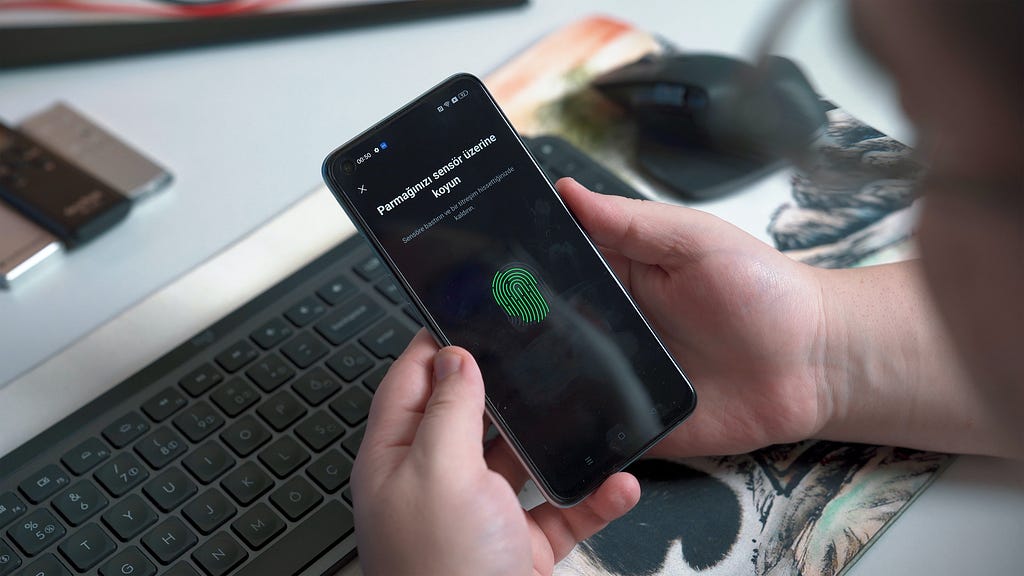Identity Assurance — Towards Secure Digital Interactions
Identity assurance is vital to confirm the authenticity of an individual’s identity, ensuring secure access to resources and preventing unauthorized activities.
 Photo by Ben Sweet on Unsplash
Photo by Ben Sweet on UnsplashIntroduction
In today’s digital era, building trust online is more critical than ever. As our world increasingly relies on the internet for day-to-day activities, it’s no surprise that cybercriminals have found opportunities to exploit vulnerabilities in digital platforms. That’s where identity assurance comes into the picture. As the first article in our series on identity assurance, we will discuss the concept of identity assurance, and how businesses can implement an effective strategy to safeguard user identities.
What is Identity Assurance?
Identity assurance is the level of confidence a service provider has that an individual is indeed who they claim to be when performing an online interaction. This involves assessing the authenticity of user-provided credentials, enforcing security measures such as multi-factor authentication (MFA), and utilising advanced technologies like biometrics and artificial intelligence (AI) to detect and prevent fraudulent activities. It is crucial for maintaining trust, data privacy, and preventing fraud, especially in sectors like finance, healthcare, e-commerce, and government services.
Let’s compare identity assurance to authentication and authorization. Authentication is the process of verifying a user’s identity using credentials, such as usernames and passwords. On the other hand, authorization determines the actions a user can perform or the resources they can access based on their assigned permissions. In contrast, identity assurance refers to the level of confidence or trust in asserting that the authenticated and authorized user genuinely is who they claim to be.
The National Institute of Standards and Technology (NIST) has outlined Identity Assurance Levels (IALs) in its Special Publication 800–63–3: Digital Identity Guidelines. Furthermore, NIST has published a draft Special Publication 800–63–4, which emphasizes addressing the concerns of underserved and marginalized groups, offering alternatives to facial recognition technology, considering the integration of mobile driver’s licenses, and incorporating fraud checks in the identity verification process.
Identity Assurance Levels
Identity Assurance Levels are important for verifying users based on their use case. By understanding these identity assurance levels, organizations can implement appropriate identity verification processes to protect against security threats and ensure the secure access of sensitive information. These levels describe the degree of trustworthiness in a user’s asserted identity. There are three IALs, ranging from low to high confidence:
- IAL1 (Low Assurance): This level provides self-asserted identity information from users, which means there is little or no validation of the user’s identity. Users might provide their name and identifying details, but no substantial verification process is required. IAL1 is typically used for scenarios where the impact of an imposter accessing the system is low.
- IAL2 (Medium Assurance): This level requires remote or in-person identity proofing, including the verification of identifying materials (e.g., government-issued IDs). Users must also undergo multi-factor authentication. This level is suitable for applications that handle sensitive information and where unauthorized access could lead to moderate risk.
- IAL3 (High Assurance): This level requires in-person identity proofing. Users must provide further, robust evidence of their identities, which then undergo thorough document inspection and validation before granting access to the system. IAL3 offers a high level of confidence in a user’s identity and is used in scenarios where a higher impact of imposter access is possible, such as in sensitive financial systems or access to classified information.
 Photo by Onur Binay on Unsplash
Photo by Onur Binay on UnsplashEmerging Technologies Shaping Identity Assurance:
- Biometrics: This technology utilizes unique physical characteristics like fingerprints, facial recognition, and iris scanning to verify an individual’s identity. Biometric authentication provides a secure and convenient solution, particularly for high assurance scenarios.
- Blockchain: Blockchain technology offers decentralized, tamper-proof, and transparent identity management. It can streamline many identity-verification processes, increasing efficiency and trust between service providers and users.
- Machine Learning and AI: Artificial Intelligence (AI) and Machine Learning can significantly enhance trust and security in digital platforms by identifying potential fraud through continuous analysis of user behavior. These technologies can detect anomalies and patterns that may indicate fraudulent activities, thereby protecting both service providers and users.
- Multi-Factor Authentication (MFA): As a robust authentication method, MFA combines two or more credentials (such as password, biometric data, or security token) to verify an individual’s identity. This approach adds an extra layer of security and protection against risks like phishing attacks or data breaches.
There are several challenges and considerations while implementing Identity Assurance solutions:
- Balance between security and user experience: Striking the right balance between security and user experience is critical. Stronger identity verification methods might require users to go through multiple steps, which could result in a poor user experience. Conversely, simplifying the process might increase the risk of fraud.
- Privacy concerns: Protecting users’ privacy is paramount when collecting and handling personal identification data. Organizations must follow data protection regulations like GDPR, HIPAA, or CCPA to ensure data privacy and secure storage.
- Cost factor: Robust identity assurance mechanisms can be expensive to implement and maintain. Organizations need to evaluate cost-effectiveness, considering aspects such as software, infrastructure, training, and support.
- Integration with existing systems: Integrating an identity assurance solution with existing systems might involve compatibility issues, particularly when using legacy systems or implementing multi-factor authentication (MFA).
- Scalability and flexibility: As organizations grow, their identity assurance solutions must be able to scale and adapt to changing business requirements, user base, and potential security threats.
- Choosing the right level of assurance: Different situations call for different assurance levels. For example, financial transactions might require a higher level of security compared to routine website login. Organizations must assess the risk level and choose the appropriate authentication measures.
- Technology adoption: Rapid advancements in technology continuously reshape the landscape of identity assurance. Organizations must stay up-to-date with the latest tools and techniques, such as biometrics, risk-based authentication, and decentralized identity solutions.
- Social engineering threats: Attackers continue to deploy sophisticated social engineering tactics to trick users into revealing their credentials. Identity assurance solutions must account for human factors and educate users about potential threats.
- Compliance requirements: Organizations must adhere to the regulations and industry standards applicable to their specific domain, such as KYC, AML, or PCI-DSS, which can present additional challenges during implementation.
- Monitoring and analytics: Continuous monitoring and analytics can be crucial in detecting anomalies and preventing unauthorized access. Implementing an effective monitoring solution is essential for comprehensive identity assurance.
Conclusion
As our reliance on online services continues to grow, so too must the systems that protect our identities. The future of identity assurance depends on leveraging technology advancements and forming collaborative partnerships. By doing so, we can create a more secure and equitable digital landscape for everyone.Stay tuned for our forthcoming articles, which will delve deeper into the applications and execution of identity assurance.
Identity Assurance — Towards Secure Digital Interactions was originally published in Walmart Global Tech Blog on Medium, where people are continuing the conversation by highlighting and responding to this story.